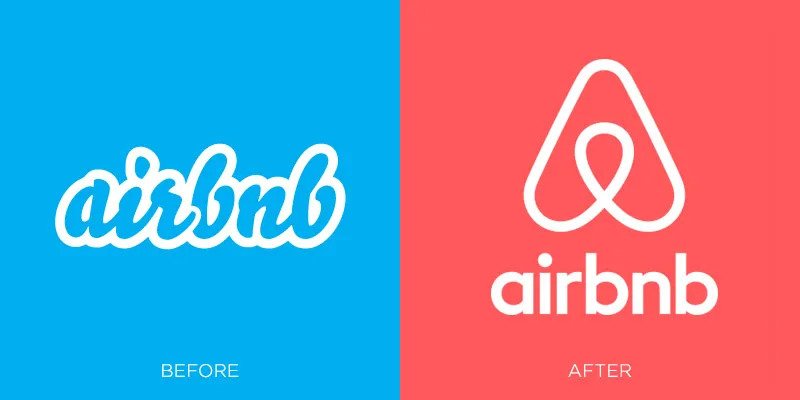
5 Ecommerce Branding Strategies That Will Drive Your Business Growth
Intro
Many people start an eCommerce business and think they have a good idea of what they are doing. But the competition is intense, and soon, they feel like just another small fish in a big pond. However, once they realize that to succeed, they need a lot more than just a good product—they need a brand that resonates with their audience personally. This is the game-changer.
You see, branding in eCommerce is not just about having a fancy logo or a catchy slogan. It’s about creating an identity that your customers can connect with and relate to. An identity that will make them say, “Yes, this is exactly what I’ve been looking for!”
How do we create this kind of brand? Well, that’s what we’re going to explore. Whether you’re a seasoned entrepreneur or just starting, the strategies we’ll cover are designed to take your eCommerce business to new heights. So stay tuned and keep reading to find out!
What is Branding?
Imagine walking into a party where you don’t know anyone. You’re scanning the room, figuring out who to talk to first. Then, you see someone wearing a shirt of your favorite band. Instantly, you feel a connection. That’s branding—at its core, it’s about making your business the guy at the party everyone wants to talk to because they instantly feel a connection.
Branding is every interaction, every touchpoint, from your eCommerce website design to the way you respond to customer emails. It’s the promise you make to your customers about what they can expect when they choose your store over the sea of competitors.
Branding is Storytelling
What story do you want to tell about your business? Take Dyson, for example. Their cleaning equipment tells a story of transformation—how their product turns a mundane task like vacuuming into an enjoyable experience. A story like that becomes the backbone of your brand, influencing everything from your marketing messages to your product design.

Components of a Brand
Branding encompasses your visual identity (including your logo), but it’s your brand voice, customer service style, and even the packaging your products come in. Each element should reflect the story you want to tell. Glossier understood this when they revamped their packaging to make unboxing their makeup products an experience their customers love and share on social media.

Brand Identity vs. Brand Image
Here’s a crucial distinction: brand identity is how you see your brand, but brand image is how your customers see it. Sometimes, there’s a gap between the two. A clothing brand, J.Crew, learned this the hard way when they began to be perceived as too premium or upscale by their traditional customers, making them assume the products were out of their price range. J.Crew rolled back and adjusted its brand identity to close that gap, ensuring the brand image aligned with its mission to be accessible to everyone.

Why is Branding Important in eCommerce?
In this day and age, where a new online store pops up every minute, branding is your survival kit. The case for many who first launch their online business is that they become obsessed with metrics, conversions, SEO… you name it. While these are crucial, they miss the forest for the trees. They don’t focus enough on why someone should choose their online store over the next one. That ‘why’ is your brand.
Standing Out in a Crowded Marketplace
The internet is so crowded that your eCommerce business is like a needle in a haystack without a distinct brand. Try to stand out by infusing your brand’s unique personality and values into every aspect of your business, from the website copy to social media posts. Customers don’t just come for the products; they often come for the experience, the feeling of being part of something bigger.
Building Customer Loyalty and Trust
Trust is the currency of eCommerce. With so many options available, customers need a reason to keep coming back to you. Branding builds this trust. For instance, by consistently delivering on your brand’s promise of exceptional customer service, turn one-time buyers into lifelong fans. By consistently helping, your customers become advocates, spreading the word far and wide.
Enhancing Brand Recognition and Recall
Do you ever find yourself humming a jingle from an ad or recognizing a product by its packaging? That’s brand recognition at work. A memorable logo and a cohesive color scheme that makes your eCommerce brand instantly recognizable is an investment. More importantly, it helps with brand recall, ensuring that when customers need a product you offer, your brand is the first that comes to mind.


Warby Parker’s website features a clean, minimalist design with a distinctive blue and white color scheme, reflecting its modern approach to eyewear. The simplicity of the site’s design emphasizes the brand’s straightforward, customer-friendly approach to selling glasses online.
Helping Brand Expansion and Diversification
Your brand is a living, breathing entity that can grow and evolve with your business. A strong brand foundation opens new opportunities, like launching new product lines and entering new markets. The trust and loyalty you build mean customers are more receptive to these new ventures because they are confident in the brand behind them.
Branding is the magic ingredient that can transform your eCommerce business from just another online store into a beloved brand. It makes you memorable, builds trust, and ultimately drives growth.
Five eCommerce Branding Strategies
1. Understand Your eCommerce Brand’s Core Identity
Digging deep into your brand’s core identity is a journey of self-discovery for your business. It’s not just about what you sell but why and who you’re selling it to. You need to start with a solid foundation to carve out your space in the eCommerce world. Like building a house without a strong foundation, it doesn’t matter how beautiful it looks—it won’t stand the test of time. Here’s how we approach defining the core values of our clients and how you can do the same.
Define Your Brand Vision, Mission, and Values
Your mission and values are the heartbeat of your brand. They answer the big questions: Why does your brand exist? What does it stand for? Ideally, you wish to do more than sell products; you want to make a difference in people’s lives.
Vision statement
Your vision statement is your brand’s ultimate goal, the impact you aspire to have on the world, or the pinnacle of success you aim to reach.
Craft your vision statement: Describe what you aim to achieve in the future and the ideal state you want for your world or industry.
Here are some real-world examples for your inspiration:
Tesla: “to create the most compelling car company of the 21st century by driving the world’s transition to electric vehicles.”
Google: “to provide access to the world’s information in one click.”
Patagonia: “Build the best product, provide the best service, and constantly improve everything we do.”

Patagonia defines itself as a sustainable brand. Everything from product descriptions to images and colors reflects its environmental focus.
Mission statement
Your mission should focus on what your people are here to achieve. It’s why your brand exists today. It focuses on the present and outlines the purpose behind your company’s existence.
Craft your mission statement: This should reflect your brand’s reason for being and its impact on your customers or community.
Nike’s mission is “to bring inspiration and innovation to every athlete globally.”
Starbucks’s mission is “To inspire and nurture the human spirit—one person, one cup, and one neighborhood at a time.”
Microsoft: “To empower every person and every organization on the planet to achieve more.”
Values
Values are the principles and beliefs that guide your company’s behavior and decision-making process. They are the essence of your company’s identity.
List your core values: Consider the non-negotiable principles in doing business and interacting with customers.
Airbnb lists among its core values “Be a Host,” emphasizing community, belonging, and hospitality—key elements that resonate through its entire business model, from its platform’s design to consumer interactions.
Coca-Cola’s values are leadership, collaboration, integrity, accountability, passion, diversity, and quality. These values guide the company in operating and interacting with its customers, communities, and partners.
Apple values innovative, high-quality products and focuses on the customer. It is committed to delivering the best user experience through innovative hardware, software, and services.
Identify Your Target Audience
Knowing who you’re talking to is crucial. Many make the mistake of trying to appeal to everyone, only to realize that in doing so, they appeal to no one. Your brand messaging won’t resonate until you are clear on your target audience.
Knowing who you’re talking to is crucial. Many make the mistake of trying to appeal to everyone, only to realize they are appealing to no one. Your brand messaging won’t resonate until you are clear on your target audience.
Here is what determines your audience:
- Demographics: Age, location, gender, income level, etc.
- Psychographics: Interests, values, lifestyles, and behavior.
Understanding these will help you tailor your brand to meet your audience’s needs and desires.
Four techniques for identifying your target audience:
- Analyze Competitors: Look at who your competitors are targeting and how they position themselves. This can help you identify your niche or an underserved market segment.
- Social Media Insights: Platforms like Facebook, Instagram, and LinkedIn provide valuable data on the demographics and interests of your followers. Analyzing this information can help you understand who is engaging with your content.
- Customer Feedback: Direct feedback from current customers can offer insights into who finds the most value in your products or services. Online reviews, consumer surveys, and direct communication can be rich sources of information.
- Google Analytics: Use Google Analytics to track the demographics and interests of your website visitors. This data can help you refine your target audience based on who is already interested in your brand.
Craft Your Unique Value Proposition (USP)
This is your brand’s elevator pitch—what sets you apart from the competition. So, it’s not just about offering a product but a solution to a problem your audience doesn’t even know they have. It may take some trial and error, but finding that unique angle is vital to your brand’s identity.
Here’s how you can start:
- Identify your competitors: Know who else is playing in your space and what they offer.
- Highlight what makes you different: Is it your product quality, customer service, price point, or something else?
Understanding your brand’s core identity lays the groundwork for a strong and resilient business. Know who you are, who you speak to, and what makes you stand out. A brand’s elaborate core identity is the strategic backbone that can guide every decision you make.
2. Develop a Consistent Visual Brand Language
After laying the foundation and understanding your brand’s core identity, it’s time to translate that into a visual language that communicates who you are at a glance. I can’t stress enough how critical this step is. It’s like deciding what to wear to that first date—you want to make the best impression possible because you might not get a second chance.
Logo and Design Elements
- Logo: Your logo is often the first interaction someone has with your eCommerce brand. Clients usually go through several iterations before landing on one representing their brand’s essence. Think of your logo as your brand’s face. It should be memorable, scalable, and reflective of your brand’s personality.

One of the most impactful logo redesigns in recent history is Airbnb’s logo transformation in 2014. The logo redesign played a crucial role in Airbnb’s branding strategy, making the company more recognizable and reinforcing its commitment to belonging and inclusivity.
- Design Elements: These include your color scheme, typography, and imagery. Don’t just pick a color scheme with your favorite colors; understand the psychology behind colors and how they align with your brand’s values.
- Typography and imagery also play a massive role in setting the tone. Every element should contribute to a cohesive story, whether sleek and modern or warm and approachable.
Website and Packaging Design Consistency
Website: Your eCommerce website is your digital storefront. It must be visually appealing, easy to navigate, and, most importantly, consistent with your brand language.
E-commerce stores sometimes feel disjointed from their physical packaging, leading to a confusing consumer experience. Aligning the two creates a seamless brand experience, both online and offline.
Packaging: Never underestimate the power of packaging. It’s the first tangible experience customers have with your brand. Make it count. Investing in quality, branded packaging turns unboxing into an experience that customers share on social media, amplifying your brand’s reach.
Package inserts are a nice touch for your e-commerce branding and can bring multiple benefits to your business. They offer a unique opportunity to surprise and delight your customers beyond their initial purchase.
By including thoughtful extras like discount codes for future purchases, personalized thank-you notes, or samples of other products, you can significantly enhance the unboxing experience.
These small gestures make customers feel valued, encouraging repeat business and word-of-mouth promotion. In my experience, customers often shared their unboxing experiences on social media when they found an unexpected insert, further amplifying our brand’s visibility and appeal.
The Importance of Color Psychology
Color can evoke emotions, convey messages, and influence perceptions. Here’s a quick rundown of what I learned about color psychology:
- Blue: Trust, security, and calmness. It is ideal for brands wanting to establish trust.
- Red: Excitement, passion, and urgency. Great for brands looking to evoke strong emotions or promote sales.
- Green: Health, growth, and tranquility. Perfect for wellness brands or those with an eco-friendly focus.
- Yellow: Optimism, clarity, and warmth. It can be used to grab attention and evoke a sense of happiness.
Your visual brand language is your brand’s wardrobe. It’s how you show up in the world. Ensure it is attractive and authentic to who you are as a brand. Consistency across all your visual touchpoints builds recognition and trust, which is crucial in converting first-time visitors into lifelong customers.
3. Create Engaging and Valuable Content
Once your visual branding is on point, the next step is to breathe life into your brand through content. Content is your brand’s voice; it’s how you communicate with your audience, share your story, and, ultimately, persuade people to buy from you. The fact is, without compelling content, even the most visually appealing brand can fall flat.
Develop a Content Marketing Strategy
- Identify Your Goals: What do you want your content to achieve? E-commerce is usually about building a community and driving sales. Your goals could be different, but they should guide your content strategy.
- Understand Your Audience: Creating resonating content starts with knowing who you’re talking to. Spend time diving into your audience’s interests, challenges, and pain points to ensure your content speaks directly to them.
- Diversify Your Content: Don’t put all your eggs in one basket. Blog posts, videos, infographics, podcasts—different formats appeal to others. Find a mix that works for your audience and stick with it. Always experiment and adapt as their preferences might evolve.
Utilize Social Media
- Choose the Right Platforms: Not all social media platforms are created equal. Where does your audience hang out? Instagram and Facebook were goldmines for many of our eCommerce clients, but your audience might be more active on LinkedIn or Twitter.
- Video platforms like YouTube or TikTok can help you succeed in 2024. Did you know that YouTube is the second largest search engine after Google? Short videos can be very effective for branding and advertising, and if your products or services are best showcased through video, don’t hesitate to employ them as soon as possible.

- Be Consistent but Authentic: Regular posting and authenticity are essential. Share real stories, successes, and even failures. Authenticity builds a stronger connection with your audience.
- Engage With Your Audience: Social media is a two-way street. Respond to comments and messages and engage with your audience’s content. This engagement fosters a sense of community and loyalty.
Use Email Marketing for Personalized Communication
- Build Your List: Your email list is gold. Focus on building it through lead magnets and enticing offers, ensuring you provide value in exchange for their email.
- Segment Your Audience: Not everyone on your list has the same interests. Segment your list to ensure the content is relevant to each group, increasing engagement and conversions.
- Personalize Your Messages: People want to feel like you’re talking directly to them. Personalization can make a big difference in open rates and engagement, even simply by using their name.
Creating engaging and valuable content is about understanding your audience and delivering what they want and need. It’s a powerful tool for building brand awareness, establishing trust, and, ultimately, driving growth. Keep your content relevant, engaging, and, most importantly, authentic.
4. Make Use of Customer Feedback and Testimonials
The voice of your customer is one of the most powerful tools in your branding arsenal. Leveraging feedback and testimonials bolsters your brand’s credibility and provides invaluable insights for improvement. Here’s how you can make the most out of this resource:
Encourage Customer Reviews
- Make It Easy: Simplify the process for customers to leave reviews. Integrate a review system on my product pages and follow up with customers via email, inviting them to share their experiences.
- Incentivize Feedback: Sometimes, a little nudge is all it takes. Offering a discount or entry into a giveaway in exchange for reviews can increase participation. Remember, the goal is to encourage genuine feedback.
- Respond to All Reviews: Engagement is critical. Make it a point to respond to every review, positive or negative. This shows customers that you value their feedback and take it seriously.
Showcase Success Stories
- Social Proof on Your Website: Featuring a selection of reviews prominently on your homepage or product pages can significantly influence purchasing decisions. Ensure the best reviews are front and center, reassuring potential buyers immediately. Great product pages usually feature an elaborate review section, which is favored by browsing customers and search engines alike.

Amazon is famous for its elaborate review section at the bottom of the page.
- Create Case Studies for more significant transformations or successes. They are particularly effective for higher-priced items or services, providing a deeper insight into the customer’s journey and the impact of your brand.
- Video Testimonials: There’s something incredibly persuasive about seeing and hearing a satisfied consumer speak about their positive experience. We found that video testimonials on product pages and social media significantly boost conversion rates.
- Use a Variety of Formats: Testimonials and success stories can be shared as written quotes, video interviews, or before-and-after photos. Diversifying the format keeps the content fresh and engaging for your audience.
Continuously Improve Based on Feedback
- Analyze Feedback Trends: Review feedback regularly to identify patterns or recurring issues. Use this data to prioritize improvements in your products and customer service.
- Involve Your Community in Product Development: Occasionally, ask your audience for input on new products or features. This not only makes them feel valued but also ensures that your offerings meet customer needs and expectations.
- Share Improvements with Your Customers: Transparency builds trust. Make it a habit to share updates on how customer feedback enhances the brand experience. This reinforces the value of their input and shows your commitment to continuous improvement.
Utilizing customer feedback and testimonials is a strategic method of establishing trust, enhancing your offerings, and engaging with your audience meaningfully. Keep in mind that every piece of feedback you receive can be valuable. It presents an opportunity to learn, improve, and strengthen your brand’s reputation.
5. Invest in Community Building and Social Proof
Creating a sense of community around your brand can turn casual customers into ambassadors. As a company or an individual, you need to foster an environment where your customers feel valued, heard, and connected to your brand and each other. Building a solid community is a proven method to amplify brand loyalty and word-of-mouth marketing. Here’s how to cultivate this invaluable asset:
Build a Brand Community (a Tribe)
- Create Exclusive Spaces: Whether it’s a Facebook group, a forum on your website, or an exclusive membership platform like Discord or Thinkiffic, create a space where your customers can engage with each other and your brand on a deeper level.
- Host Events: Online webinars, Q&A sessions, or even in-person meetups (when possible) can strengthen the bond within your community. Giving your customers opportunities to learn and connect under your brand’s umbrella significantly boosts engagement.
- Encourage User-Generated Content: Challenge your customers to share their experiences, photos, or tips related to your products. This content serves as powerful social proof and makes customers feel like an active part of your brand’s story.
Work with Influencers and Brand Ambassadors
- Identify the Right Partners: Look for influencers who align with your brand values and have an engaged audience that matches your target demographic. Authenticity is critical here; partnerships should feel natural, not forced.
- Create Win-Win Relationships: Offer value to your influencers and ambassadors, not just in terms of products or commissions but also by promoting their content or providing exclusive experiences.
- Leverage Their Reach: Collaborations, takeovers, and co-created content can introduce your brand to a broader audience while benefiting from the influencer’s credibility.
Take Advantage of User-Generated Content (UGC)
- Showcase Real Customers: Featuring real customer photos, reviews, and stories on your website and social media provides social proof and celebrates your community.
- Create Hashtags for Your Brand: Encourage customers to use branded hashtags when posting about your products. It’s a great way to aggregate user-generated content and increase brand visibility.
- Reward Engagement: Acknowledge and reward customers who frequently post about your brand. Recognition can be a powerful motivator for continued engagement and advocacy.
Investing in community building and leveraging social proof are strategies beyond traditional marketing. Creating an ecosystem around your brand makes customers feel like they belong to something special, especially if it continually brings them benefits.
A sense of belonging can transform your brand from another choice in the marketplace to an integral part of your customers’ identities. While building a community is undoubtedly good for business, it can also be a rewarding journey that brings your brand closer to the people who make it possible.
Conclusion
Branding transcends aesthetics and advertising and can forge a profound connection with your audience. Implementing the five eCommerce branding strategies we’ve explored will put you on the road to growth and building a legacy.
The heart of successful branding beats to the rhythm of authenticity and unwavering commitment to delivering value. Now is the time to sculpt your eCommerce brand into one that stands out in the digital marketplace and resonates deeply with your customers.
This journey may seem overwhelming, and some companies don’t have the resources and experience to undertake it alone. At MANE Digital, we specialize in breathing life into brands like yours. From crafting your unique brand identity to amplifying your online presence, our expertise in branding, eCommerce development, and digital marketing is designed to elevate your business. Let us join your business endeavor to build your brand unforgettable.
References
- Derrick Daye, 2010, Developing Organization Mission, Vision & Values, Branding Strategy Insider, https://brandingstrategyinsider.com/developing-organization-mission-vision-values/
- Drew Urquhart, 2023, The Importance Of Brand Management In The World Of E-Commerce, Forbes, https://www.forbes.com/sites/forbesagencycouncil/2023/01/25/the-importance-of-brand-management-in-the-world-of-e-commerce/



